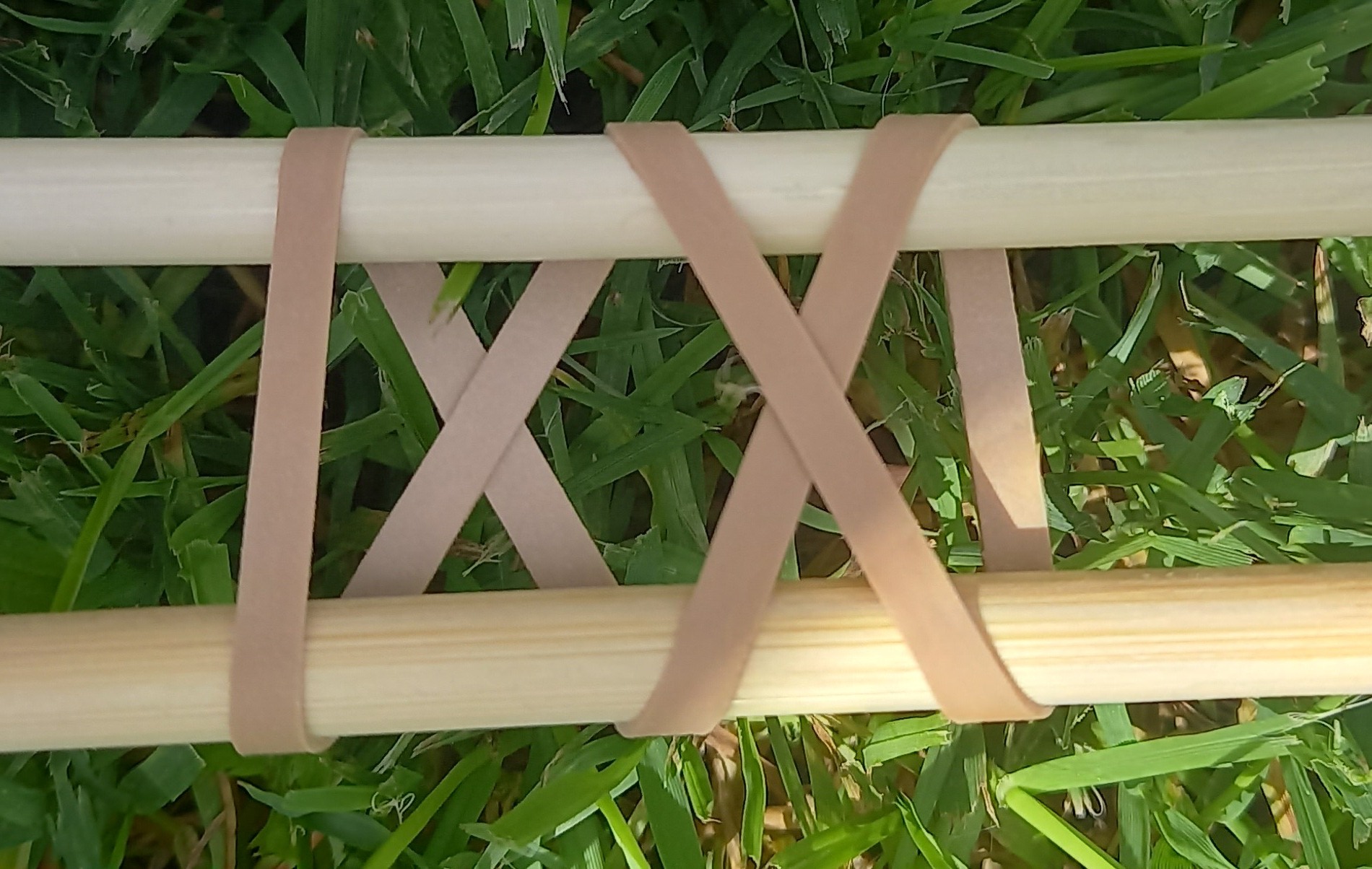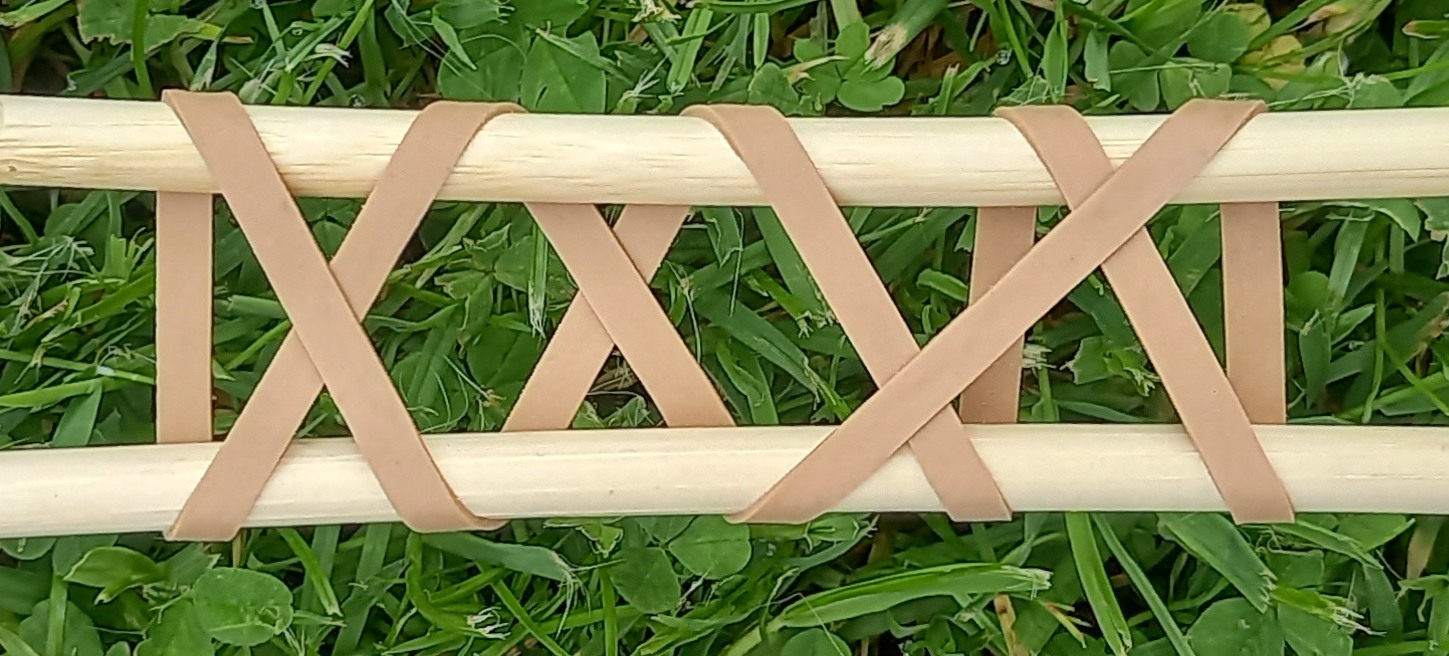Here are three observations. Two are about the real world, and easily verified using everyday objects, though maybe surprising. The third is about a university-level branch of mathematics known as Lie groups.

You can put a rubber band around something – your wrist, a beermat, a bundle of pencils – so that it lies flat everywhere.
You can't put a rubber band twice around something so that it lies flat everywhere. If you think you can, please try it.
You can put a rubber band three times around something so that it lies flat everywhere, as shown to the right. (You can also put it three times around something in such a way that it can't be made to lie flat.)
You can't put a rubber band four times around something so that it lies flat everywhere.

You can put a rubber band five times around something so that it lies flat everywhere. This is harder than putting it three times around, there are more ways to go wrong.
In general, you can put a rubber band n times around something so that it lies flat everywhere if and only if n is odd.

Here's a challenge:
I hope you try this challenge, and ask your friends to try it. If you can't do it, read on and you'll find a hint.
Suppose we have a physical object – a tennis ball or a beermat will do nicely. We will consider the ways we can rotate the object about an axis through its centre. To make a rotation, we choose an axis through the centre of the object, choose an angle, and rotate the object accordingly.
These rotations form what mathematicians call a group. (If you already know what a group is, you can skip the rest of this paragaph.) Being a group means that four axioms are satisfied:
This group of rotations, of a rigid object about an axis through its centre, in 3-space, is named SO3.
There is a group named SU2 which is a bit different from SO3. SU2 also consists of rotations of an object about its centre. With SO3, if you do a series of rotations about a single axis and adding up to 360°, you end up exactly as you started. With SU2, you end up somewhere a bit different, though the object is in its original orientation. But if you carry on and rotate it through a further 360° in the same direction, you do end up where you started.
SU2 is what is called a "double cover" of SO3.
I suspect that the three observations above are related. They all have the feature that going round once, through an angle of 2π, makes things different; while going round twice can get you back to where you started.
Below is something else which feels as if it may also be related.

This object was made by taking a strip of leather, cutting two holes near each end, making two long parallel cuts joining the holes and running almost the entire length of the strip, and plaiting. There are no free ends, making plaiting awkward. It looks as if it might be impossible. But it turns out to be fairly easy.